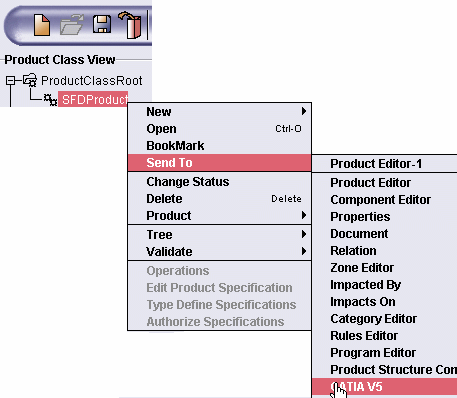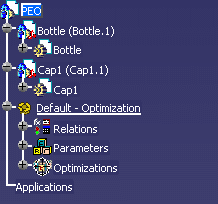|
|
The recommended
methodology for working with ENOVIA V5 VPM is:
|
|
|
To ensure seamless
integration:
|
Creating a Product in ENOVIAAt the top level of the ENOVIA product hierarchy is the product class root. This is the highest entity in a product structure and is used to group products. Products can be created directly under this level or under an intermediate level called the product class depending on how you want to structure your data. It is not necessary to create product classes, but the product class root and product must always exist. This is the product that will be sent to CATIA and is mapped to the CATIA document root.
|
|
Sending an ENOVIA Product to CATIA
This is what you see in CATIA: the ENOVIA product is mapped to the CATIA document root.
Note: You also need to send any existing workpackages you need from ENOVIA. If you send a workpackage, the product is also sent - you do not need to send both. |
|
Saving CATIA Data in ENOVIA
The Save in ENOVIA V5 dialog box appears showing objects to be saved and set to the correct save mode and save options. |
|
If the CATIA Document Root is Not an ENOVIA Product
|
|
|
|
For more information, see the CATIA / ENOVIA Interoperability User's Guide and the appropriate ENOVIA V5 VPM guide. |
|
|
|




